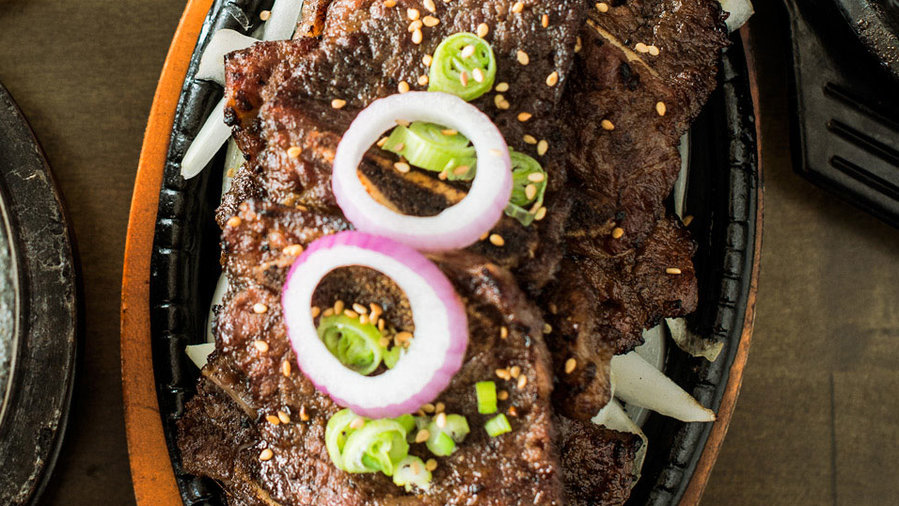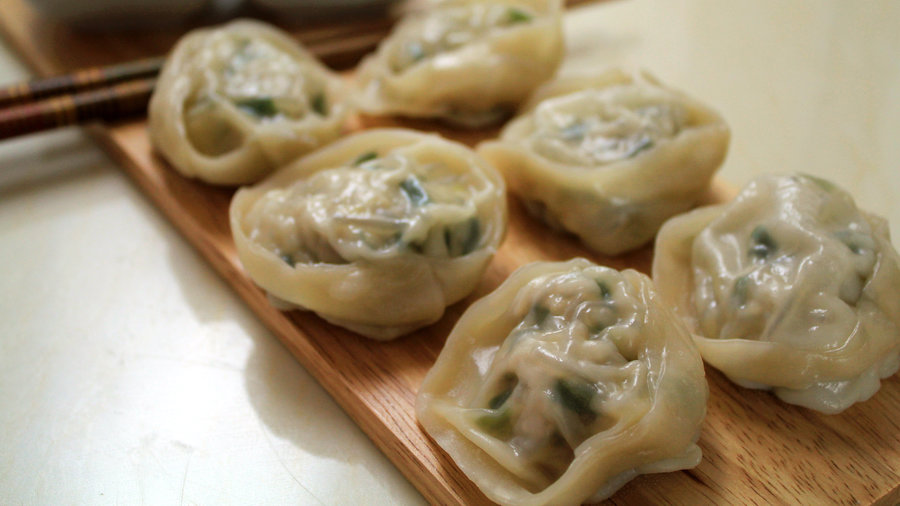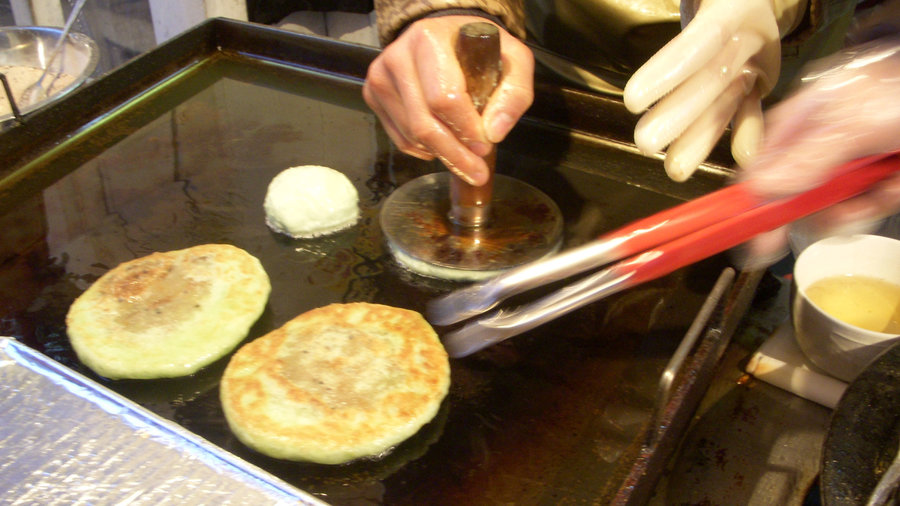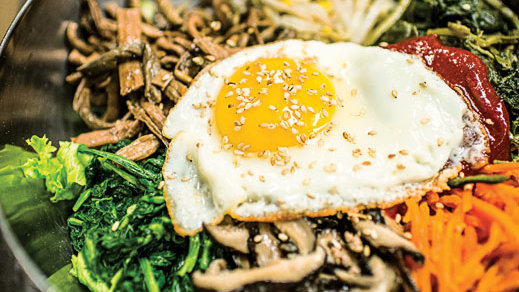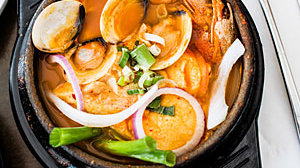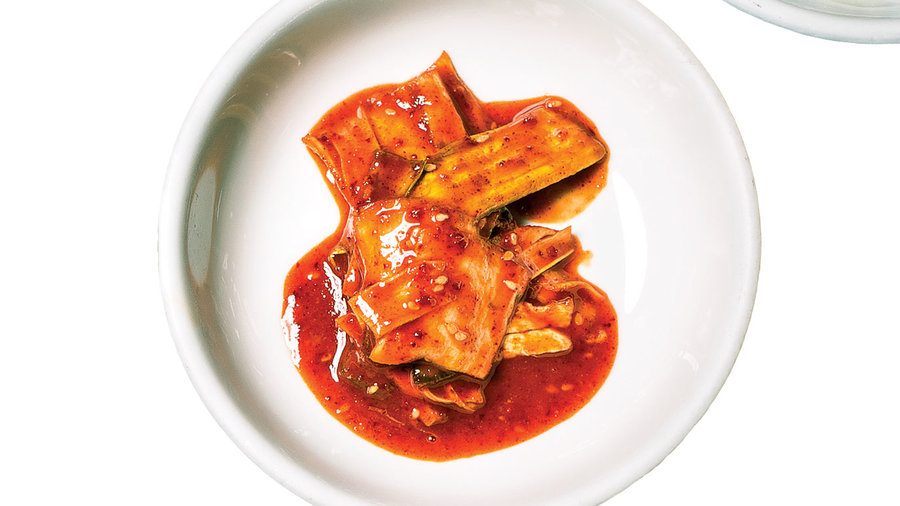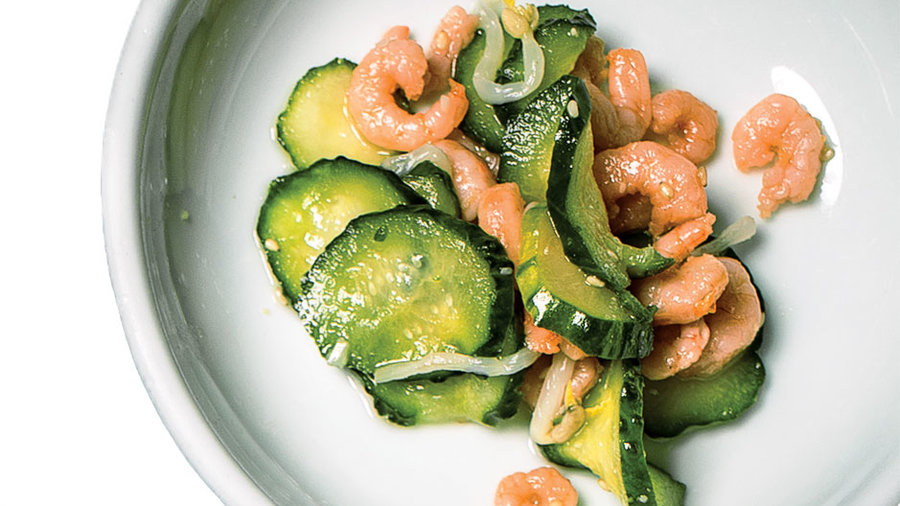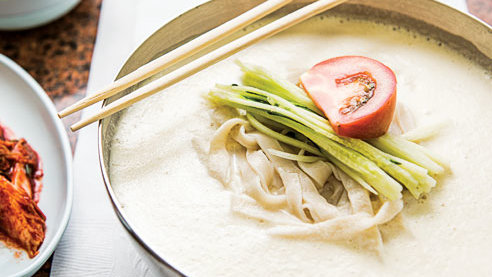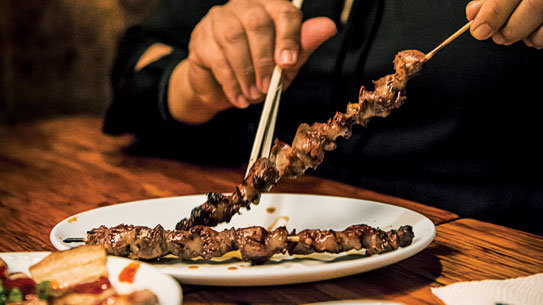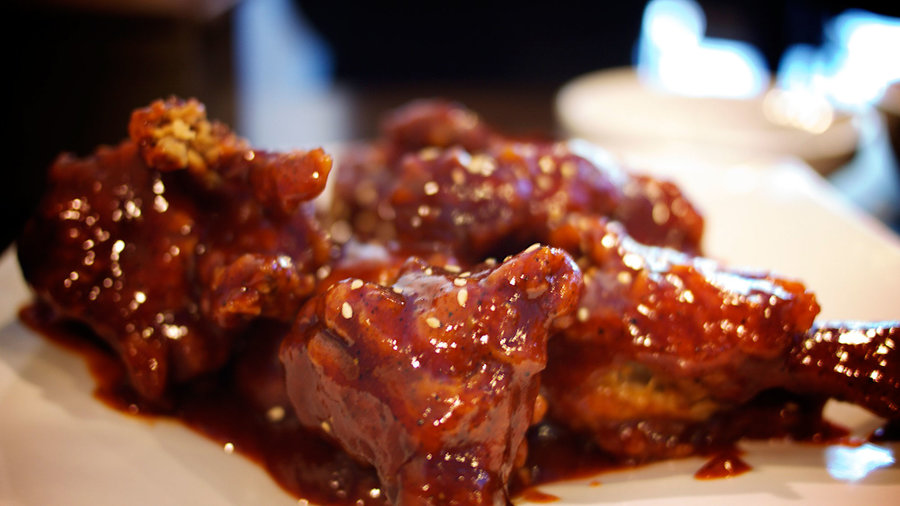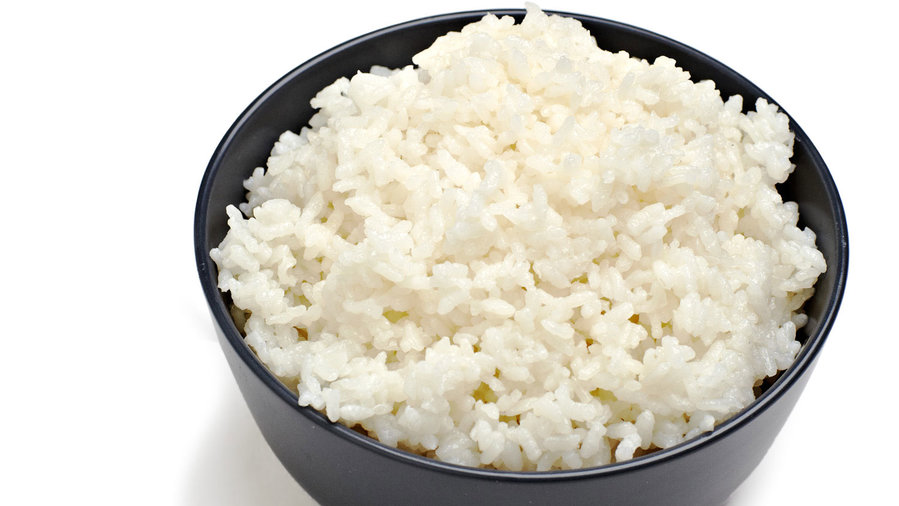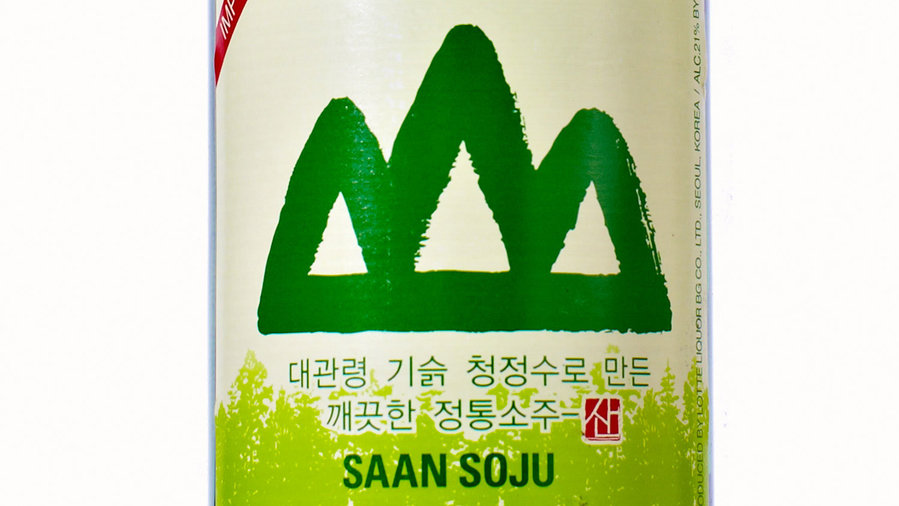Kalbi (grilled beef short ribs)
Koreans have eaten barbecue for thousands of years, but with meat so precious, it has traditionally been thinly sliced and richly seasoned. Now restaurants turn it into dinner theater. Strips of meat, typically kalbi or bulgogi (marinated rib-eye steak), are laid on grills built in the center of tables, along with garlic cloves, mushrooms, or green peppers. Once cooked, the server cuts them into bite-size pieces. Pick up chopsticks and dig in, perhaps creating a little “taco” using lettuce served stacked on a plate.
Photo courtesy of KFoodaddict (Flickr Creative Commons)
Mandu (steamed dumplings)
Introduced to Korea from China during the Joseon Dynasty, mandu were adapted to Korean ingredients. They are plumper and have thinner wonton wrappers. They also have a cleaner flavor, since no cornstarch is added to the filling. They can be filled with anything from minced pork and beef to kimchi, carrots, and sprouts, with a tangy soy-vinegar dipping sauce. Mandu can also be pan-fried, deep-fried, or boiled.
Photo courtesy of Fooding Around (Flickr Creative Commons)
Street food treats
Hotteok (pictured) is a thin, sweet rice pancake cooked on a griddle until the heat transforms the filling of ground nuts, brown sugar, and honey into syrup. It’s authentic Korean street food, just like gook hwa bhang (chrysanthemum bread), a small round pastry filled with vanilla custard or red bean paste, then cooked quickly in a pan that gives it a flowerlike imprint.
Bibimbap (rice with meat and veggies)
Rice is the foundation of most Korean meals, and bibimbap is the classic casserole of rice, vegetables, and marinated beef and kimchi. Rice—ideally golden-crusted on the bottom—in a hot stone pot is hidden beneath a colorful display of julienned carrots, bean sprouts, cucumber pickles, mushrooms, boiled spinach, plus a fried egg. Poke a fork or chopstick into the yolk and mix together to serve.
Soon dubu (tofu pots)
Soft Korean-style tofu is central to many dishes and especially delicious in a stewlike hot pot. This is pure comfort food in the form of a bubbling cauldron—assuming you take comfort in spices and lots of seafood. Crack the single raw egg into the pot and gently stir in.
Kimchi (fermented pickled vegetables)
The staple dish of Korean food originated to preserve veggies for winter. Traditionally brined radish or cabbage, South Korean kimchi tends to be sweeter, saltier, and spicier than North Korean, which is milder, more acidic, and strong on garlic and ginger. Eat it as a snack or with bibimbap.
Oi-jangajji (cucumber pickles)
Koreans pickle all kinds of food, so you’ll see not only pickled cucumbers and jalapeño peppers, but also hard-cooked eggs, garlic cloves, and radishes. Some pickles are tart and sweet, others fiery. Add them to everything from barbecued tacos to noodle bowls.
Guksu (soy milk noodle soup)
Soups are considered a main dish in Korean cuisine, rather than a starter. This chilled noodle soup, garnished with cucumber and sliced tomatoes, is thick and creamy with a very mild flavor, but you can also punch up the taste with a bit of kimchi. When the noodles are made by hand, it’s even better.
Dak dong jib (chicken gizzard skewers)
Meat on a stick is universal, but the Korean street-food version includes chicken gizzards, grilled rice cakes, ginkgo nuts, and Korean sauces with kimchi juice.
Courtesy of preetamrai (Flickr Creative Commons)
Tongdak (fried chicken)
Meet Korea’s version of fast food. Chicken is dusted with seasoned flour, then fried twice to develop a delicate, crackly skin and tender, juicy flesh. Some places serve wings seasoned with a hot red chile sauce or a sweet garlic-soy glaze. Others serve a small half-chicken. Eat with pickled radishes or soy-marinated jalapeños and Korean beer or soju.
Dining tips
Rice: Wait for the server to dole it out. Once the bowl is empty, cold water is added to the crusty remains to create a rice soup.
Eggs: That whole egg placed next to your tofu pot is raw. Just crack and add it to the bubbling stew. Stir gently to fold it into the depths of the stew, where it will steam to soft-cooked perfection.
Soup: Keep your bowl on the table instead of bringing it to your mouth, and use the long-handled “emperor’s spoon.”
What to wash it down with
Soju (pictured): Korea’s most popular alcohol. Think filtered sake (rice wine).
Makgeolli: Unfiltered fermented rice wine that’s a bit effervescent; perfect with pub grub like fried chicken wings.
Beer: Korean brews are mainly lagers; the most popular are Hite, OB, and Castle.
Tea: Restaurants often offer bori cha (barley tea) or oksusu cha (corn tea) to drink with meals. Try it hot or chilled.
Coffee: Koreans love it. Tom N Toms, their Starbucks, is Seoul-based but also in L.A. Menu’s similar, but don’t expect decaf.
